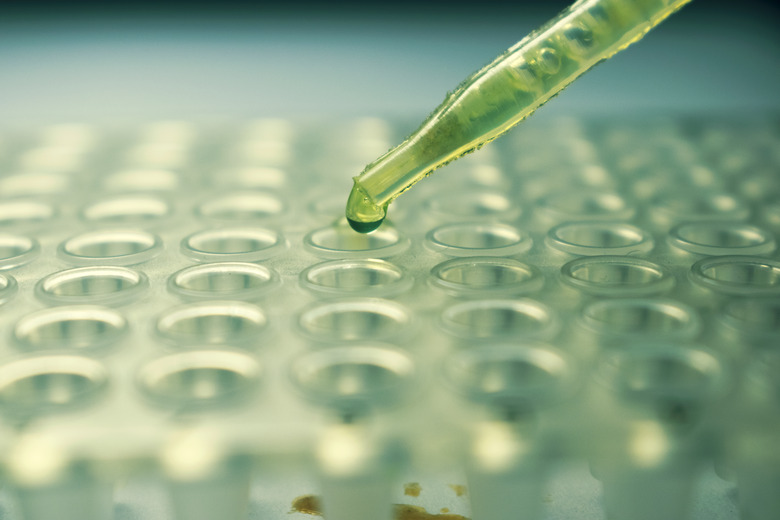How To Calculate Enantiomeric Excess
It is helpful to think of an object with a mirror image of itself for questions like explaining enantiomers and how to calculate **enantiomeric excess.** Consider gloves. There is a right-handed glove and a left-handed glove. They are the same shape and made of the same materials, but the right-handed glove will not fit on the left-handed hand and vise versa.
TL;DR (Too Long; Didn't Read)
An enantiomerically pure sample has an enantiomeric excess of 100 percent. The equation for calculating enantiomeric excess, or **ee**, is: %ee = [(moles of enantiomer – moles of other enantiomer)/total moles of both enantiomers] x 100
The ee can also be calculated using **specific rotation**, a physical property of a substance that can be looked up in reference books.
%ee = (observed specific rotation/specific rotation of the pure enantiomer) x 100
The gloves are mirror images of each other. You can visibly see this property if you just hold up your hands in front of yourself, with palms facing. The gloves are considered chiral, meaning they lack a plane of internal symmetry. They cannot be superimposed. In fact, the word chiral is derived from the Greek word for hand.
There are molecules that are like the gloves or your hands. They cannot be superimposed although they are made of the same shape and have the same structure, because they are chiral. The word in chemistry that describes these mirror image molecules are **enantiomers.**
The right-handed molecules are called (R)-enantiomers. The left-handed molecules are called (S)-enantiomers.
What Is Enantiomeric Excess?
What Is Enantiomeric Excess?
Imagine a hypothetical situation in which you have a box of gloves. Some unknown number will be left-handed gloves, and some number will be right handed-gloves, except there will be more of one glove type than another.
A racemic mixture is said to be an enantiomeric mixture of equal number of (R)-enantiomers and (S)-enantiomers.
If you have only one enantiomer or the other, the substance is said to be enantiomerically pure.
When there is more of either the (R)-enantiomer or the (S)-enantiomer, you can say that you have an enantiomeric excess.
Enantiomeric excess is also called optical purity. This is because chiral molecules cause the rotation of plane-polarized light and are said to be "optically active."
An enantiomerically pure sample has an enantiomeric excess of 100 percent.
How to Calculate Enantiomeric Excess
How to Calculate Enantiomeric Excess
The equation for calculating enantiomeric excess, or ee, is:
%ee = [(moles of enantiomer – moles of other enantiomer)/total moles of both enantiomers] x 100
The ee can also be calculated using **specific rotation**, a physical property of a substance that can be looked up in reference books.
%ee = (observed specific rotation/specific rotation of the pure enantiomer) x 100
Cite This Article
MLA
Salvia, Vanessa. "How To Calculate Enantiomeric Excess" sciencing.com, https://www.sciencing.com/calculate-enantiomeric-excess-2672/. 4 June 2018.
APA
Salvia, Vanessa. (2018, June 4). How To Calculate Enantiomeric Excess. sciencing.com. Retrieved from https://www.sciencing.com/calculate-enantiomeric-excess-2672/
Chicago
Salvia, Vanessa. How To Calculate Enantiomeric Excess last modified March 24, 2022. https://www.sciencing.com/calculate-enantiomeric-excess-2672/
